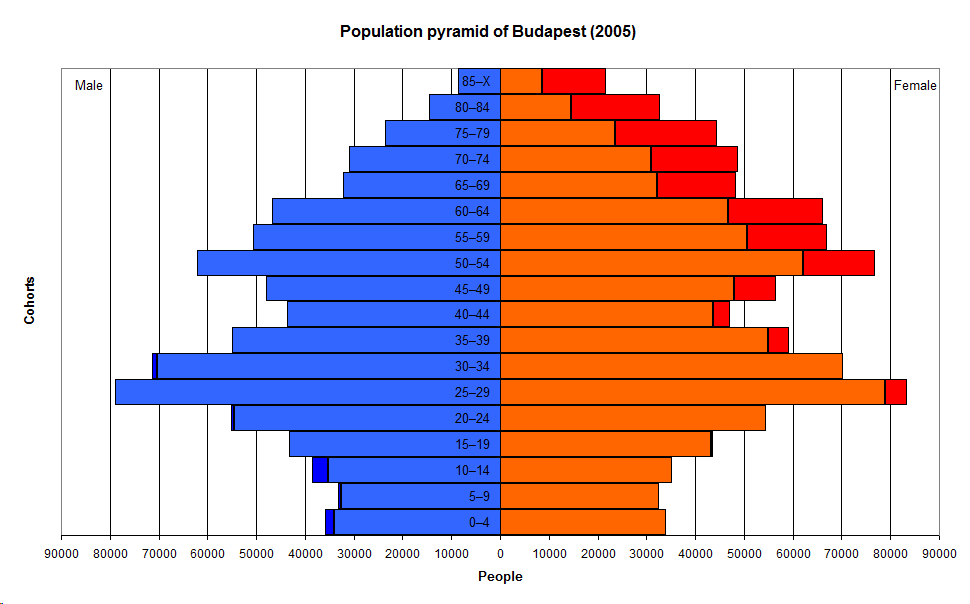|
Greater Budapest
Greater Budapest is the name of Budapest in its present, extended size, as it was created by the ''Law No. XXVI of 1949'' passed on December 15, 1949 and it came into force on January 1, 1950. By attaching 7 towns and 16 villages to the former Budapest, its area enlarged from 207 km² to 525 km² (154%), the number of its inhabitants increased from 1.05 million to 1.6 million (52%), and the number of the districts augmented from 14 to 22 (57%), thus becoming the seventh metropolis of Europe in its time. The only difference between the 1950s Greater Budapest and Budapest is that Soroksár Soroksár (german: Markt) the 23rd district of Budapest, Hungary. List of mayors Twin towns - twin cities * Törökbálint – Hungary * Nürtingen – Germany * Odorheiu Secuiesc – Romania * Tvardica – Bulgaria * Tongzhou (Beijing ..., a part of District 20, voted for its independence in 1992, and in 1994 it became a separate District 23. The total area of Budapest remai ... [...More Info...] [...Related Items...] OR: [Wikipedia] [Google] [Baidu] |
Budapest
Budapest (, ; ) is the capital and most populous city of Hungary. It is the ninth-largest city in the European Union by population within city limits and the second-largest city on the Danube river; the city has an estimated population of 1,752,286 over a land area of about . Budapest, which is both a city and county, forms the centre of the Budapest metropolitan area, which has an area of and a population of 3,303,786; it is a primate city, constituting 33% of the population of Hungary. The history of Budapest began when an early Celtic settlement transformed into the Roman town of Aquincum, the capital of Lower Pannonia. The Hungarians arrived in the territory in the late 9th century, but the area was pillaged by the Mongols in 1241–42. Re-established Buda became one of the centres of Renaissance humanist culture by the 15th century. The Battle of Mohács, in 1526, was followed by nearly 150 years of Ottoman rule. After the reconquest of Buda in 1686, the ... [...More Info...] [...Related Items...] OR: [Wikipedia] [Google] [Baidu] |
List Of Districts In Budapest
Budapest, the capital of Hungary has 23 districts ( hu, kerület), each with its own municipal government. The number of districts in Budapest Budapest was organized into 10 districts (numbered from I to X) in 1873 after the unification of the cities of Pest, Buda and Óbuda. The districts at that time: *Buda: I, II *Óbuda: III *Pest: IV, V, VI, VII, VIII, IX, X In the 1930s, 4 new districts were organized, numbered from XI to XIV. On 1 January 1950, 7 neighboring towns and 16 villages were annexed to Budapest by creating 9 new districts, so the number of its districts increased to 22. District IV was annexed to District V and the number IV was given to the northernmost newly merged town, Újpest. Former district borders were also partly modified but the old numbering system is still clear on the map. In 1994, Soroksár left District XX, became the newest district and received the number XXIII. Districts Listed below are the ordinal numbers of the 23 districts of Budapest, th ... [...More Info...] [...Related Items...] OR: [Wikipedia] [Google] [Baidu] |
Demographics Of Budapest
The population of Budapest was 1,735,041 on 1 January 2013. According to the 2011 census, the Budapest metropolitan area was home to 2,530,167 people and the Budapest commuter area (real periphery of the city) had 3.3 million inhabitants. The Hungarian capital is the largest in the Pannonian Basin and the ninth largest in the European Union. Budapest is also the primate city of Hungary and some neighbouring territories. Population growth The Capital city of Budapest was established on 17 November 1873 with the unification of three separate towns, named Buda, Óbuda and Pest. In 1720 Buda and Óbuda had 9,600 residents, while Pest was a small town with only 2,600 inhabitants. In the 18th and 19th century Pest became the natural commercial, transportation, industrial and cultural center of Hungary, Buda and Óbuda remained small towns. The population of Pest reached 50,000 in the 1820s, 100,000 in the 1840s and 200,000 in the 1860s. At the time of the unification Buda and Ó ... [...More Info...] [...Related Items...] OR: [Wikipedia] [Google] [Baidu] |
History Of Budapest
The city of Budapest was officially created on 17 November 1873 from a merger of the three neighboring cities of Pest, Buda and Óbuda. Smaller towns on the outskirts of the original city were amalgamated into Greater Budapest in 1950. The origins of Budapest can be traced to Celts who occupied the plains of Hungary in the 4th century BC. The area was later conquered by the Roman Empire, which established the fortress and town of Aquincum on the site of today's Budapest around AD 100. The Romans were expelled in the 5th century by the Huns, who were challenged by various tribes during the next several centuries. The Hungarian conquest of the Carpathian Basin started at the end of the 9th century, and the Kingdom of Hungary was established at the end of the 11th century. From around 1300 to the incorporation of 1873, Buda was the capital of the Kingdom of Hungary for five periods of less than a century each. Prehistory and Roman era The first town, built by Celts in the first ... [...More Info...] [...Related Items...] OR: [Wikipedia] [Google] [Baidu] |


